 W
WAcanthoceras is an extinct cephalopod genus belonging to the subclass Ammonoidea and family Acanthoceratidae that lived from the Albian to early Coniacian stages of the Cretaceous.
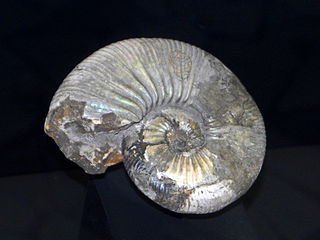 W
WAcanthohoplites is an extinct genus of ammonites in the family Parahoplitidae that lived in the Aptian and Early Albian stages of the Early Cretaceous.
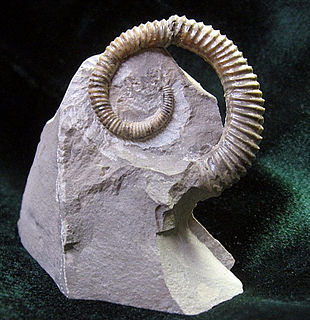 W
WAllocrioceras is an ammonoid cephalopod from the Turonian to Santonian stages of the Late Cretaceous, included in the turrilitoid family Anisoceratidae. Its shell is strongly ribbed and is in the form of a widely open spiral.
 W
WCadomites is an extinct ammonite genus from the superfamily Stephanoceratoidea that lived during the Middle Jurassic.
 W
WCleviceras is an extinct genus of cephalopod belonging to the family Hildoceratidae. These cephalopods existed in the Jurassic period, during Toarcian and possibly even uppermost Pliensbachian age. Sometimes, it is considered to be a synonym of Eleganticeras.
 W
WDouvilleiceras is a genus of ammonites from the Middle to Late Cretaceous. Its fossils have been found worldwide, in Africa, Asia, Europe, and North and South America.
 W
WEchioceratidae is an extinct family of ammonites that lived during Sinemurian stage of Early Jurassic.
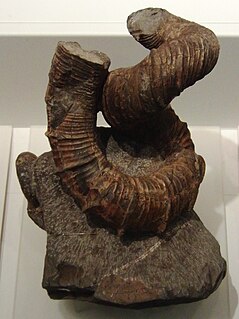 W
WEubostrychoceras is a genus of helically wound, corkscrew form, heteromorph ammonite which lived during the Upper Cretaceous. The genus is included in the ancycleratid family Nostoceratidae.
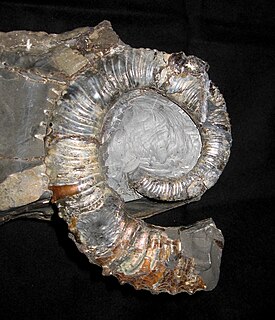 W
WExiteloceras is an ammonite genus from the Late Cretaceous.
 W
WFagesia is a small, subglobular ammonite belonging to the vascoceratid family of the Acanthocerataceae that lived during the Turonian stage of the Late Cretaceous, 92-88 Ma ago.
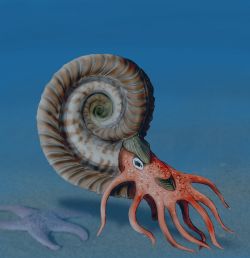 W
WHildoceratinae is an extinct subfamily of cephalopods belonging to the family Hildoceratidae. Ammonites of this subfamily had shells with elliptical or quadrate whorl section with keel or tricarinate, bisulcate venter. Ribs were variable, from falcate to strongly angled and from fine to strong. They can be interrupted by spiral groove in midlateral part of the shell. While some species can be smooth, strongly ribbed ones can have tubercules. Microconchs have short lapplets that is in its shape similar to the shape of growth lines in spiral midlateral groove.
 W
WLyelliceras is a genus of ammonites belonging to the family Lyelliceratidae. These cephalopods were fast-moving nektonic carnivores. They lived in the Cretaceous period, Albian stage.
 W
WMacroscaphites is an extinct cephalopod genus included in the Ammonoidea that lived during the Barremian and Aptian stages of the Early Cretaceous. Its fossils have been found throughout most of Europe and North Africa.
 W
WMammites is a Late Cretaceous ammonite genus included in the acanthoceratoidean family, Acanthoceratidae, and the type genus for the subfamily Mammitinae. Mammites was named by Laube and Bruder in 1887.
 W
WNeocomites is a genus of ammonite from the Lower Cretaceous, Berriasian to Hauterivian, and type genus for the Neocomitidae.
 W
WNipponites is an extinct genus of heteromorph ammonites. The shells of Nipponites form "ox-bow" bends, resulting in some of the most bizarre shapes seen among ammonites.
 W
WNostoceras is an extinct genus of ammonites. The etymology of the name Nostoceras comes from "nostos" meaning return and "ceros" meaning horn, named as such by Alpheus Hyatt because it bends back on itself.
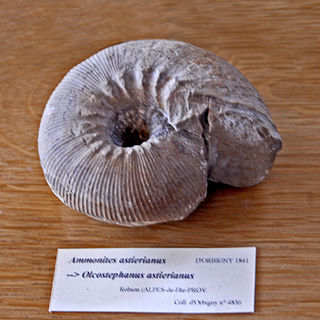 W
WOlcostephanus is an extinct ammonoid cephalopod genus belonging to the family Olcostephanidae. These fast-moving nektonic carnivores lived during the Cretaceous, from the upper Valanginian to the lower Hauterivian age.
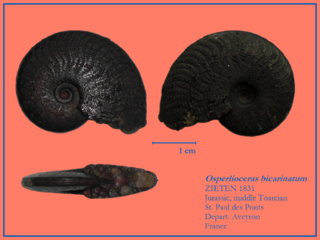 W
WOsperleioceras is an extinct genus of cephalopod belonging to the family Hildoceratidae. These cephalopods existed in the Jurassic period, during Toarcian stage. Its fossils were found in Europe and South America. First species of this genus, Osperleioceras bicarinatum has evolved in what is now France from Harpoceras subplanatum.
 W
WOstlingoceras is an extinct genus of ammonites belonging to the Turrilitidae family.
 W
WPachydiscus is an extinct genus of ammonite from the Late Cretaceous with a worldwide distribution, and type for the desmoceratacean family Pachydiscidae. The genus' type species is P. neubergicus. Altogether some 28 species have been described.
 W
WParapuzosia is an extinct genus of desmoceratid ammonites from the Cenomanian to the Campanian of Africa, Europe, and North America. They are typically very large ammonites, reaching diameters of 60 cm (2.0 ft) or more, with the largest species measuring upwards of more than 2.5 m (8.2 ft). It possesses a moderately involute shell with flat or slightly rounded sides. Distinct primary and secondary ribbing can be observed in the inner whorls.
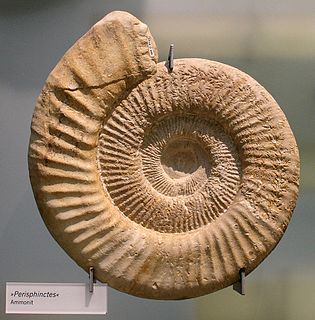 W
WPerisphinctes is an extinct genus of ammonite cephalopod. They lived during the Middle to Late Jurassic epochs and serve as an index fossil for that time period. The species P. boweni was named after the English chemist and geologist E. J. Bowen (1898–1980).
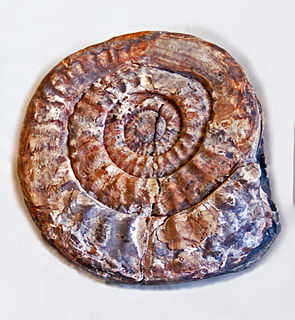 W
WPeroniceras is an ammonite belonging to the Ammonitida family Collignoniceratidae.
 W
WPhyllopachyceras is an extinct genus of ammonoid cephalopods belonging to the family Phylloceratidae. These nektonic carnivores lived in the Cretaceous, from Hauterivian to Maastrichtian to age.
 W
WPseudoaspidoceras is an extinct genus of ammonites in the family Acanthoceratidae.
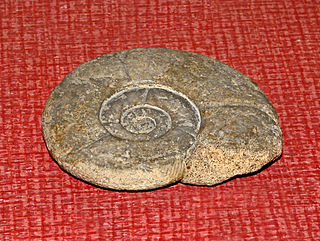 W
WPuzosia is a genus of desmoceratid ammonites, and the type genus for the Puzosiinae, which lived during the middle part of the Cretaceous, from early Aptian to Maastrichtian. Sepkoski defines the range from Albian to Santonian. The generic name comes from the Serbian words "Puž" (snail) and "oce/ose" (axis), gaining its name from the shell's snail-like appearance.
 W
WSphenodiscus is an extinct genus of acanthoceratacean ammonite. The genus has been found from many continents and is thought to have had a large global distribution during the Maastrichtian stage of the Late Cretaceous. It was one of the last ammonoids to have evolved before the entire subclass became extinct at the end of the period during the Cretaceous–Paleogene extinction event.
 W
WTurrilites is a genus of helically coiled ammonoid cephalopods from the lower part of the Upper Cretaceous ; generally included in the Ancyloceratina. Previously it was included in the ammonoid suborder, Lytoceratina.
 W
WVascoceras is an extinct genus of Cretaceous ammonites included in the family Vascoceratidae. These fast-moving nektonic carnivores lived in the Cretaceous period from the late Cenomanian to the early Turonian. The type species of the genus is Vascoceras gamai from Portugal.